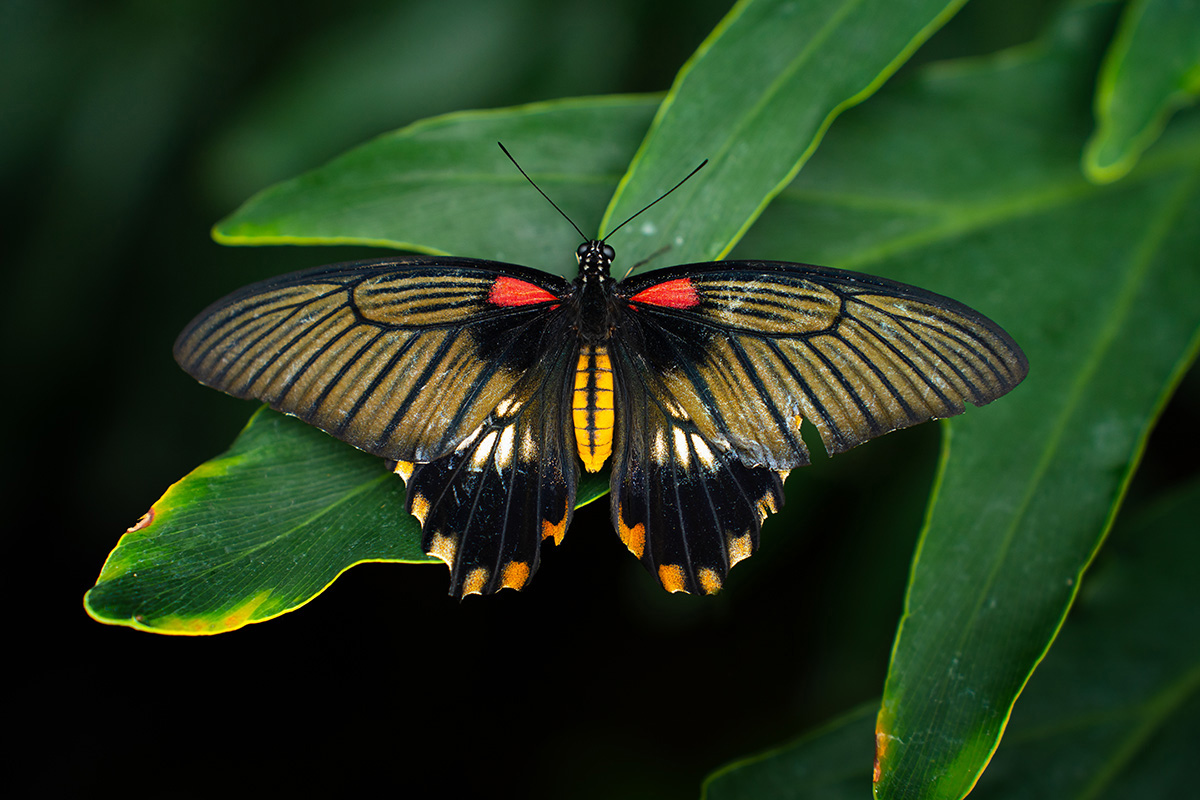Mindfulness in Focus
With her Tamron 28-75mm F2.8 G2 zoom lens, Chelsea Marcantonio takes a breather through her macro-style photos.
Share the article:
More Photo Tips | Video Gallery | Photo Gallery | Enewsletter sign-up
By Jenn Gidman
Images by Chelsea Marcantonio
Chelsea Marcantonio’s photographic journey and flower photography started young, when her parents gave her disposable Kodak cameras and sent her out into the backyard. "I eventually managed to save up my allowance and buy myself a small digital camera,” she says. “I kept upgrading over the years, until I finally purchased a Sony mirrorless camera system. The very first lens I bought for it was the Tamron 28-75mm lens (the latest evolution of which is the Tamron 28-75mm F/2.8 Di III VXD G2 zoom)."
Today, Chelsea’s passion for insect photography has gravitated toward macro-style photography, an organic result of her work with the Nature Conservancy of Canada. “The majority of my workday is spent outside, where I’m constantly running into different insects and flowers,” she says. “I used to be terrified of bugs before I started taking pictures of them. Now, insects like butterflies, and the hidden details I can find in flora with my camera, are what brings me the most happiness.”
Central to Chelsea's macro photography is her Tamron 28-75mm lens. “When you’re in the forest, the lighting isn’t great under the canopy,” she says. “Having a lens that can do this kind of close-up work—the minimum object distance (MOD) at the 28mm end is 7.1 inches, with a maximum magnification ratio of 1:2.7—with an F2.8 aperture is wonderful. I love the bokeh I’m able to achieve to make my subjects stand out. The 28-75mm’s range is also perfect for me, because I like having as little gear as possible when I’m exploring. I want to share how easy and satisfying this type of photography is, because it’s so beneficial for our mental health to be able to wander outside and reconnect with nature.”
CHELSEA’S QUICK TIPS FOR FLOWER PHOTOGRAPHY
Blur out the backgrounds.
Create distance between yourself and your subject, as well as between your subject and the background. If your subject is relatively large, step back, zoom in fully to the telephoto end of the 28-75mm, and set your aperture to F2.8 to achieve a shallow depth-of-field and create pleasing bokeh. For smaller subjects, like tinier insects or flowers, get a little closer, use a wider focal length, and select an aperture closer to F5.6, which will keep your subject sharp but still offer background blur. Then, you can crop the image closer in post-processing.
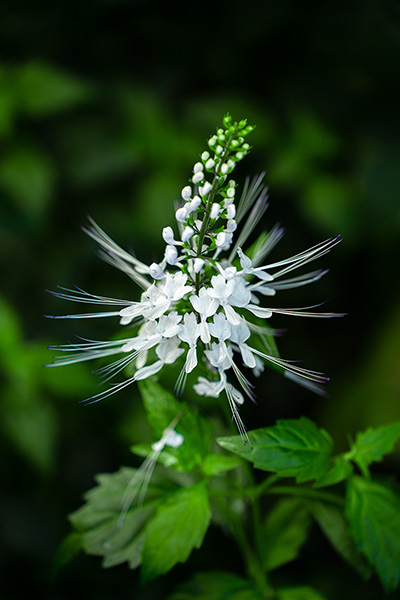
28-75mm (75mm), F2.8, 1/250 sec., ISO 200
Click image to view larger
Showcase the details.
Use selective focus to draw the viewer's eye to a specific part of your subject, such as a butterfly’s eye or the veins of a flower petal, while allowing the rest to nicely blur. Shooting macro-style photos with the 28-75mm G2 allows you to capture fine details that may not be visible from a distance. Try to photograph your subject straight on or from directly overhead to ensure that the elements you want to highlight, like a butterfly’s wings, are in focus.
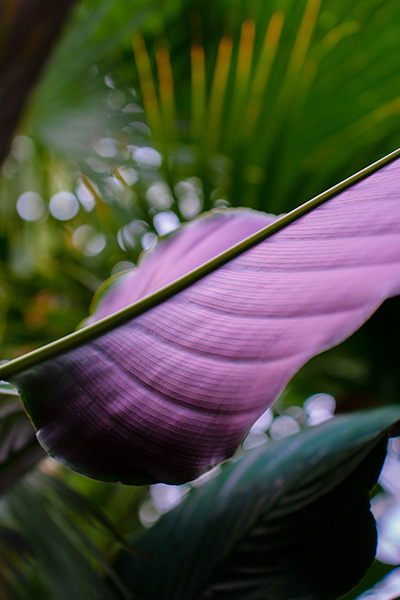
28-75mm (75mm), F3.5, 1/250 sec., ISO 250
Click image to view larger
Don’t shoot in direct sunlight.
That will give you harsh contrasts. Instead, seek out more even lighting. Mornings and evenings often provide a more gentle, diffused light that can beautifully illuminate your subjects. If you find yourself in a situation where harsh light is unavoidable, position the subject with the light behind them, then adjust the shadows later in post-processing to bring out the details of the backlit subject.
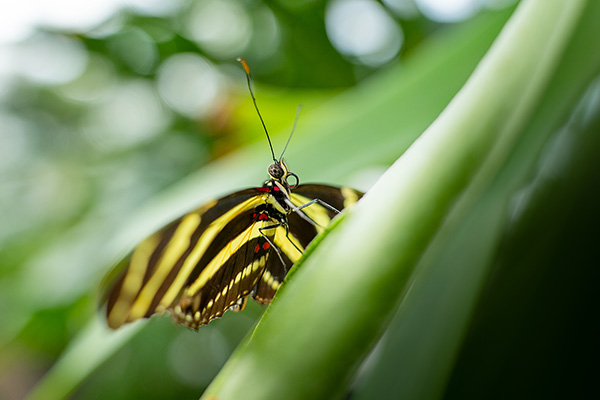
28-75mm (28mm), F2.8, 1/250 sec., ISO 200
Click image to view larger
Be selective in your editing.
When it comes to macro photos, particularly of butterflies and plants, I never want to saturate the entire picture. Instead, I choose certain areas of the image that I want to concentrate on and highlight. For example, you can brighten the eyes of a butterfly or selectively saturate certain spots on the wings to replicate the vibrant colors you saw in person.
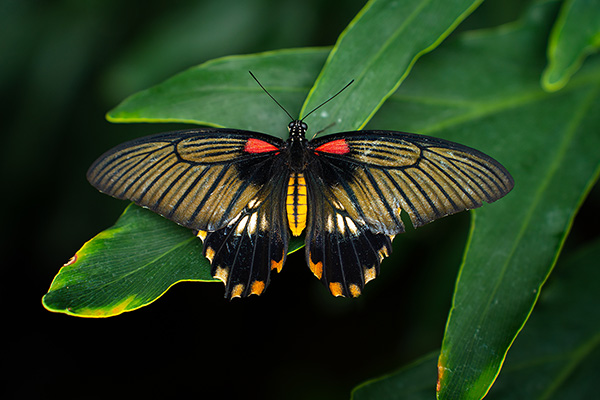
28-75mm (75mm), F3.5, 1/250 sec., ISO 250
Click image to view larger
Learn different species’ habits for insect photography.
Each butterfly species, has its own special behaviors and preferable habitats. Some are way more tolerant of me and my camera than others; commas and checkerspots, for example, are very friendly and come right up to me. By learning to recognize these unique patterns, you can anticipate your subject’s movements and position yourself for better photo opportunities.
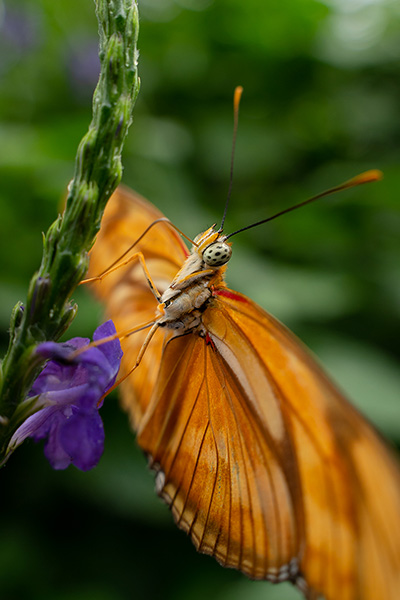
28-75mm (28mm), F5.6, 1/200 sec., ISO 400
Click image to view larger
Be willing to explore counterintuitive places.
You might think that the only place you’ll find butterflies is in a field of beautiful flowers. You will find them there, but butterflies have diverse feeding habits and some are often attracted to other food sources, including urine, sweat, and animal feces. That’s right—don’t be surprised if you see them hovering around a pile of horse poop or near some roadkill. They’re also known to gather in groups to “puddle” on sandy or gravelly roads after the rain, which is when they lick up the salty, mineral-rich water. Don’t hesitate to venture into the unexpected.
To see more of Chelsea Marcantonio’s work with insect and flower photography, check out her Instagram.
Is your Tamron News subscription up to date? Click to subscribe to all editions of Tamron News featuring how-to tips, new product news, contest announcements and inspiration!
More Photo Tips | Watch Videos | Learn More About Tamron Lenses | Photo Gallery
